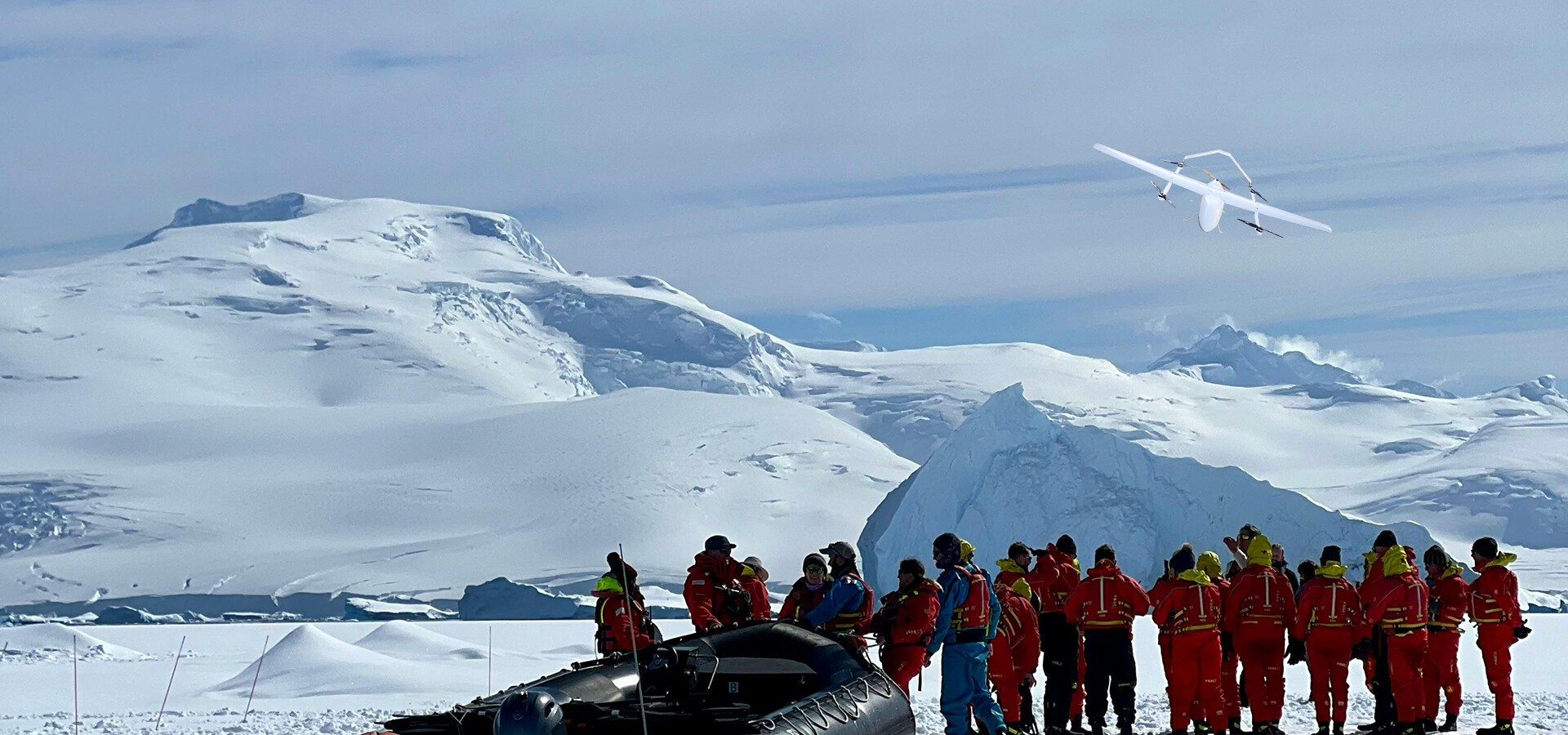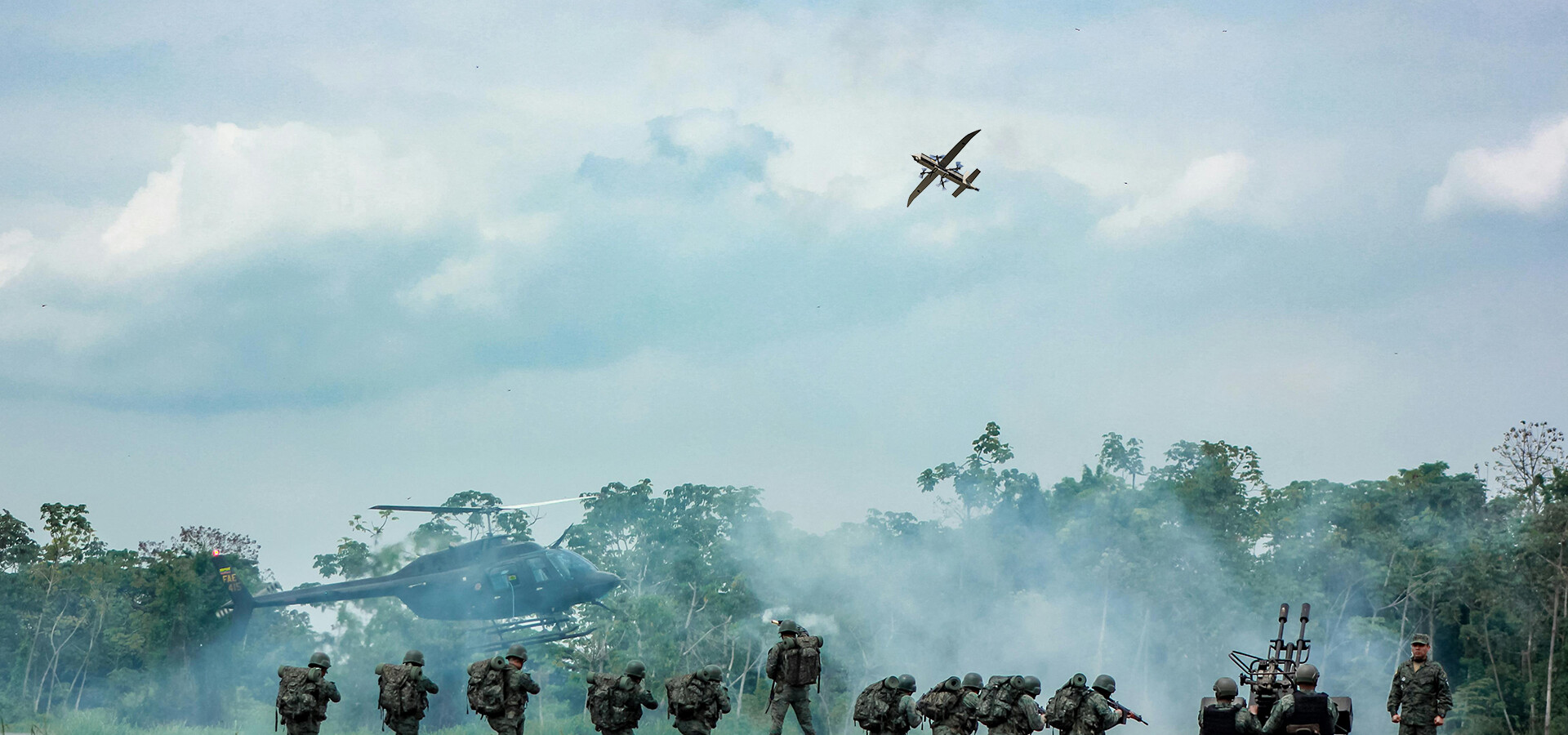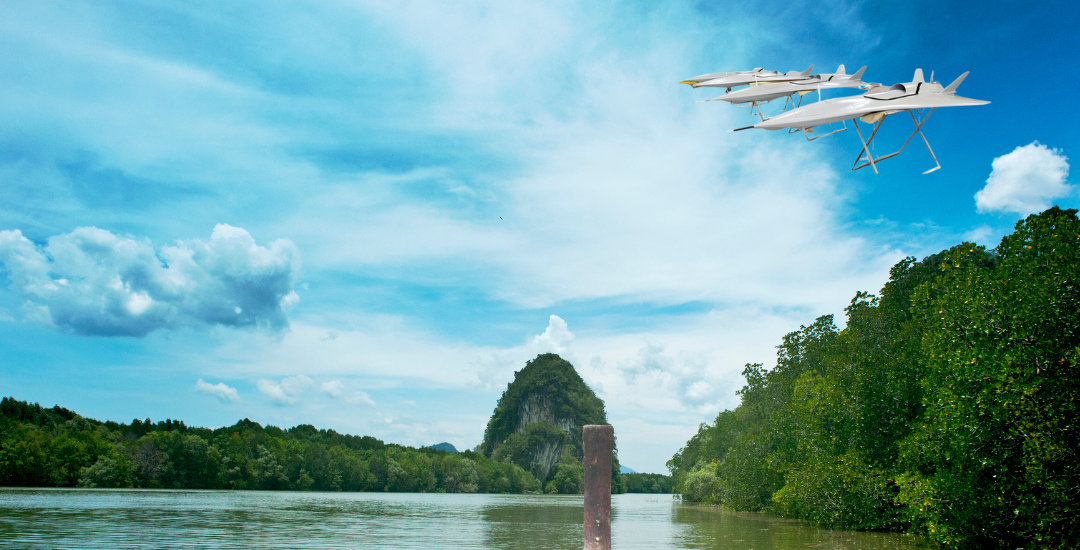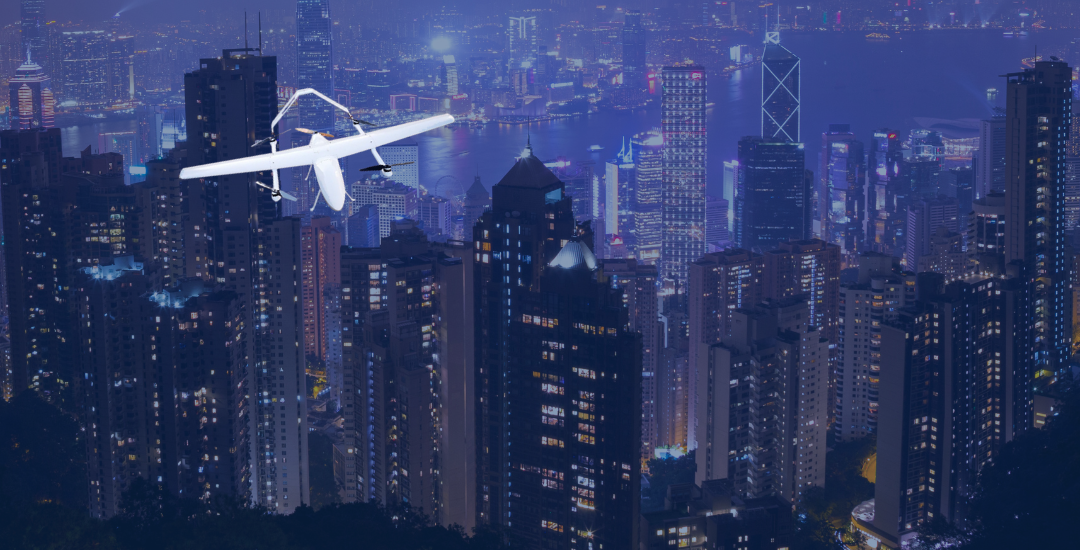NEWS
Home > News


Introduction to VTOL UAV
Vertical Takeoff and Landing (VTOL) Unmanned Aerial Vehicles (UAVs) are revolutionizing industries worldwide. These advanced drones combine the versatility of helicopters with the speed and efficiency of fixed-wing aircraft. VTOL UAVs can take off and land in confined spaces, hover for extended periods, and travel long distances. Their ability to operate in both urban and remote environments makes them indispensable tools across various sectors.
This article explores the key applications of VTOL UAV, showcasing how they are utilized in different industries such as defense, agriculture, search and rescue, environmental monitoring, and infrastructure inspection.

Military and Defense
Surveillance and Reconnaissance
In modern military operations, real-time intelligence is critical, and VTOL UAVs are essential for gathering this information. Equipped with advanced cameras, sensors, and communication systems, these drones provide:
- Live battlefield intelligence: VTOL UAVs offer an aerial perspective that is critical for monitoring enemy movements and gathering reconnaissance data in real-time.
- Stealth operations: These drones operate quietly and discreetly, making them ideal for missions in hostile or heavily guarded territories.
Additionally, VTOL UAVs are valuable for border surveillance, where they can patrol long stretches of remote areas without the need for a runway.
Tactical Combat Support
Beyond surveillance, VTOL UAVs can play an active role in combat scenarios. Armed with weapons or supplies, they can provide tactical support by:
- Delivering critical supplies: These drones are capable of delivering ammunition, medical supplies, or other vital resources to soldiers on the front lines.
- Engaging in direct combat: Some advanced military VTOL UAVs can be equipped with precision-guided munitions to support ground troops during engagements.
Their ability to operate in harsh environments and reach remote locations makes them invaluable assets for logistics and combat support.
Logistics and Supply Transport
VTOL UAVs are increasingly used for military vtol uav. Their vertical takeoff capability allows them to land in rough terrains and confined spaces, where traditional aircraft might not be able to reach. This is especially useful in disaster-stricken areas or remote outposts where infrastructure may be damaged or non-existent.
Search and Rescue Operations
Rapid Deployment in Emergency Situations
During natural disasters or emergencies, time is often the most critical factor. VTOL UAVs can be deployed quickly and effectively in response to:
- Disaster zones: Whether it's a flood, earthquake, or wildfire, VTOL drones can immediately survey the area, providing rescuers with vital information about the extent of the damage.
Locating survivors: Equipped with thermal imaging and other advanced sensors, VTOL UAVs can locate people trapped under debris or in hard-to-reach places.

Use in Remote and Hard-to-Reach Areas
In mountainous terrain, forests, or collapsed urban environments, traditional rescue teams may face significant obstacles. VTOL UAVs can bypass these challenges by:
- Flying into tight spaces: They can access remote locations where helicopters or ground vehicles cannot operate.
- Providing real-time data: VTOL UAVs feed live information back to rescue teams, allowing for more informed and efficient decision-making.
Lifesaving Advantages
VTOL UAVs can also be outfitted with tools for delivering emergency medical supplies or even small payloads of food and water to isolated victims. Their agility and flexibility in challenging environments make them lifesaving tools in search and rescue missions.
Agriculture and Precision Farming
Crop Monitoring
Agriculture has been transformed by drone technology, and VTOL UAVs play a major role in precision farming. By using multispectral and hyperspectral cameras, these drones can:
- Monitor crop health: Drones provide high-resolution images that help farmers identify plant diseases, nutrient deficiencies, or irrigation issues.
- Track growth patterns: With regular monitoring, farmers can track how crops are developing, helping to optimize harvest times.
By offering an aerial view of large fields, VTOL UAVs enable farmers to make data-driven decisions about crop management, resulting in better yields and more efficient use of resources.
Precision Spraying
Traditional methods of applying pesticides or fertilizers often result in waste and environmental harm. VTOL UAVs offer a more precise solution by:
- Targeted spraying: These drones can be programmed to apply chemicals only to specific areas of a field, reducing unnecessary overuse.
- Saving time and labor: The ability of VTOL UAVs to cover large areas quickly allows for more efficient spraying than manual or ground-based methods.
This precision leads to reduced chemical use, which not only lowers costs but also minimizes the environmental impact of farming.
Livestock Monitoring
VTOL UAVs are also being used in livestock management, especially on large farms where tracking and managing animals can be time-consuming. Farmers can use drones to:
- Monitor grazing patterns: VTOL UAVs help track herds across large expanses of land, ensuring animals are safe and healthy.
- Locate lost or injured livestock: Drones can quickly locate animals that may have strayed or are in need of assistance, particularly in remote or inaccessible areas.
Environmental Monitoring
Climate Data Collection
VTOL UAVs are critical tools for environmental monitoring and climate research. These drones can be deployed to gather climate data in areas that are difficult for humans to access, such as polar regions, rainforests, and oceans. Key applications include:
- Measuring air and water quality: VTOL UAVs can collect samples and data on pollutants, temperature changes, and atmospheric conditions.
- Monitoring ice caps and glaciers: UAVs help track changes in polar ice, providing essential data on the effects of climate change.
By providing accurate and up-to-date information, VTOL UAVs help scientists develop better climate models and understand environmental changes.
Wildlife Monitoring
Conservation efforts benefit greatly from VTOL UAVs. These drones can be used to monitor wildlife populations in areas where human interference could disturb animals or ecosystems. Key uses include:
- Tracking endangered species: VTOL UAVs can observe and count populations of endangered animals without disturbing their habitats.
- Mapping migration patterns: These drones can follow the movements of animals over large distances, providing crucial data on migration routes and habitat use.
This non-invasive approach to wildlife monitoring helps conservationists protect endangered species and better understand their behaviors.
Surveying Forests and Oceans
VTOL UAVs are increasingly being used to survey vast areas of forests and oceans, allowing environmental researchers to:
- Monitor deforestation: UAVs can track changes in forest cover, helping to combat illegal logging and habitat destruction.
- Survey marine environments: These drones can be equipped with sensors that detect changes in water temperature, pollution levels, and coral reef health.
The ability to access remote and delicate environments makes VTOL UAVs ideal for conservation and environmental monitoring missions.
Infrastructure Inspection
Monitoring Power Lines, Bridges, and Dams
One of the most important applications of VTOL UAVs is in the inspection of critical infrastructure. Traditional inspection methods often involve shutting down operations or sending personnel into dangerous situations. VTOL UAVs offer a safer and more efficient alternative by:
- Inspecting power lines: UAVs can fly close to power lines and towers, identifying potential issues like corrosion or loose wires without the need for manual inspections.
- Assessing bridges and dams: VTOL drones can examine hard-to-reach areas of large structures, such as under bridges or along dam walls, for cracks or other signs of damage.
This improves safety and reduces the time and cost associated with infrastructure inspections.
Enhancing Safety Through Autonomous Inspections
Many modern VTOL UAVs are equipped with AI and autonomous flight capabilities, allowing them to conduct inspections with minimal human input. This technology enables:
- Automated flight paths: UAVs can follow pre-programmed routes, ensuring comprehensive coverage of inspection areas.
- Real-time data collection: Drones equipped with high-resolution cameras and sensors provide immediate feedback on structural conditions, allowing for faster decision-making.
Cost Reduction in Maintenance and Inspection Efforts
The ability to deploy VTOL UAVs for routine infrastructure inspections significantly reduces the costs associated with traditional methods, which often involve extensive manpower, equipment, and time. UAVs can quickly and safely survey large areas, identify potential issues, and provide data that can be used to plan maintenance, minimizing downtime and preventing costly repairs.
Future Trends in VTOL UAV Applications
The use of VTOL UAVs is expected to grow as advancements in battery technology, AI integration, and sensor capabilities continue to improve. Future applications may include:
- Urban air mobility: VTOL drones could play a key role in urban delivery services and emergency response systems.
Autonomous cargo transport: As regulatory frameworks evolve, we may see the widespread use of VTOL UAVs for the automated transport of goods over long distances.
Conclusion
VTOL UAVs are transforming a wide range of industries, from military operations and emergency response to agriculture and infrastructure maintenance. Their ability to operate in both challenging and confined environments makes them invaluable tools for tasks that require speed, precision, and versatility. As technology continues to advance, the applications of VTOL UAVs will expand even further, pushing the boundaries of what’s possible in unmanned aerial systems.
SHARE:
Send a Message
RECENT POSTS
 How VTOL Drones Are Transforming Delivery Services2025-03-28
How VTOL Drones Are Transforming Delivery Services2025-03-28 VTOL Drones vs. Fixed-Wing & Multirotor: Pros and Cons2025-03-21
VTOL Drones vs. Fixed-Wing & Multirotor: Pros and Cons2025-03-21 Top 10 Safety Tips for Operating VTOL UAVs in Urban Areas2025-03-14
Top 10 Safety Tips for Operating VTOL UAVs in Urban Areas2025-03-14 Choosing the Right Fixed-Wing UAV for Your Needs2025-03-07
Choosing the Right Fixed-Wing UAV for Your Needs2025-03-07 What Is a VTOL Aircraft? A Beginner’s Guide2025-02-24
What Is a VTOL Aircraft? A Beginner’s Guide2025-02-24
Get in Touch
Please use the form below to get in touch.
If you need a reply we will get in touch as soon as possible.





